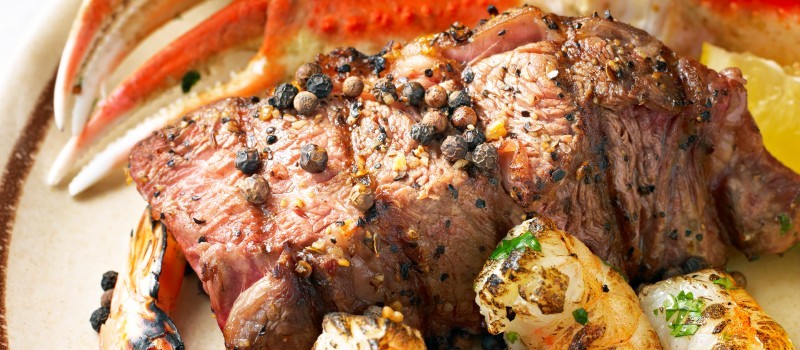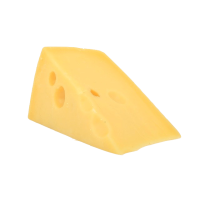The Benefits of Grass-Fed Meat
Pasture-Raised Meats Are Better for Your Health
Adopting a low carb diet is a powerful tool for managing weight, improving metabolic health, and even boosting your energy levels. However, for many, adopting a low carb or keto diet requires increasing your daily protein intake to ensure you’re getting enough sustenance to keep you full.
The type of meat you include in your diet can have a huge impact on the nutritional benefits you receive. When it comes to meat, choosing grass-fed or pasture-raised options is not just a matter of taste but also a decision that can have far reaching benefits for your health, the environment, and animal welfare.
Below, we’ll discuss the advantages of grass-fed and pasture-raised meats, exploring their added nutrition and positive environmental impact.
What Are Grass-Fed or Pasture-Raised Meats?
Before we dive into the benefits, it’s important that you understand what “grass-fed” or “pasture-raised” actually means.
Grass-Fed
Grass-fed animals are animals that primarily eat grass and other forage, as opposed to being fed a diet high in grains, such as corn or soy. This diet more closely mimics what the animal would naturally eat in the wild.
Pasture-Raised
Pasture-raised animals are given access to outdoor pastures where they can freely roam and graze. This term often overlaps with grass-fed, but pasture-raised animals may also receive supplemental feed, especially in the winter months.
Nutritional Benefits of Grass-Fed and Pasture-Raised Meats
One of the primary reasons many health conscious or low carb dieters opt for grass-fed and pasture-raised meat is the superior nutritional profile these meats offer.
- Higher Omega-3 Fatty Acids
Grass-fed meats are known for their higher content of omega-3 fatty acids compared to grain-fed meats. Omega-3s are essential fats that play a crucial role in brain function, reducing inflammation, and promoting heart health. These healthy fats are more abundant in grass-fed animals because their diet of grass and forage is rich in omega-3s.
In a low carb diet where fats are a significant energy source, the type of fat you consume is very important. Grass-fed meat can help balance your intake of omega-3 to omega-6 fatty acids, reducing the risk of inflammation-related diseases, such as cardiovascular disease and arthritis.
- Increased Conjugated Linoleic Acid (CLA)
Conjugated Linoleic Acid (CLA) is another beneficial fat found in higher concentrations in grass-fed meat. CLA has been linked to a variety of health benefits, including improved immune function, reduced body fat, and protection against cancer. For those on a low carb diet aiming for weight management or fat loss, the increased CLA in grass-fed meats can be particularly advantageous.
Learn more about the difference between grass-fed meat and conventional grain-fed meat.
- Richer in Vitamins and Antioxidants
Grass-fed meat is richer in certain vitamins and antioxidants compared to their grain-fed counterpart.
Vitamin E – An antioxidant that helps protect cells from damage, supports immune function, and has anti-aging properties.
Vitamin A – Important for vision, immune function, and skin health, grass-fed meat contains higher levels of beta-carotene, which is converted into vitamin A in the body.
Glutathione – Known as the “master antioxidant”, glutathione is very important for detoxification and reducing oxidative stress.
Learn more about the benefits of glutathione.
These vitamins and antioxidants are vital for overall health and can help to combat the oxidative stress that may occur during weight loss or intense physical activity. This makes them a valuable component of your low carb diet.
Did you know that you can also cook with grass-fed beef tallow? Check out our favourite grass-fed and finished beef tallow here!
- Lower in Total Fat, Especially Saturated Fat
While grass-fed meat is higher in beneficial fats like omega-3s and CLA, it’s generally lower in total fat and saturated fat compared to grain-fed meat. This can be beneficial for those who are concerned about their saturated fat intake. Excessive consumption of saturated fats has been linked to heart disease.
Incorporating leaner, yet nutritionally dense meats into a low carb diet can help manage fat intake while still providing essential nutrients and healthy fats.
Wenzel’s Farm makes some of our favourite 100% Grass-Fed Beef Snack Sticks!
Environmental Benefits of Grass-Fed Meat
Beyond the nutritional benefits, choosing grass-fed and pasture-raised meats can have a positive impact on the environment.
- Reduced Green House Gas Emissions
Grass-fed and pasture-raised farming practices often result in lower greenhouse gas emissions compared to conventional grain-fed systems. This is because grass-fed animals typically produce less methane, a potent greenhouse gas. Healthier soil and being fed their natural diet are what contributes to this. Additionally, pastures can act as a carbon sink, sequestering carbon dioxide from the atmosphere, helping to mitigate climate change.
- Improved Soil Health
Pasture-raised farming promotes healthier soil through natural grazing practices. The rotation of animals across different pastures allows the soil to recover and regenerate. This leads to an increase in biodiversity and reduced erosion. Healthy soil is more resilient and better at retaining water, which is important to combat the effects of droughts or extreme weather events.
Monoculture crops, which are often used to feed livestock, deplete the soil of nutrients, and require significant inputs of chemical fertilizers and pesticides.
- Biodiversity Preservation
Pasture-raised systems support a more biodiverse environment. The varied plant species in pastures provide habitats for numerous insects, birds, and other wildlife, promoting a balanced ecosystem. This biodiversity is often lost in large-scale grain-fed operations, where vast areas are cleared for monoculture crops.
Choosing pasture-raised meats supports farming practices that prioritize the health of entire ecosystems, contributing to the preservation of wildlife and natural habitats.
- Water Conservation and Quality
Water usage in livestock farming is a significant environment concern. Grain-fed operations typically require more water, not just for the animals but for the irrigation of crops grown as feed. In contrast, pasture-raised systems often rely on natural rainfall, reducing the need for irrigation. Furthermore, healthy pastures with deep-rooted grasses improve water infiltration and reduce runoff, leading to better water conservation.
Additionally, the absence of chemical fertilizers and pesticides in well-managed pasture systems helps protect water quality by reducing the risk of pollution in nearby rivers and lakes.
Animal Welfare and Ethical Considerations
The ethical treatment of animals is another critical aspect of choosing grass-fed and pasture-raised meats. These systems often allow animals to live in conditions that are more natural and humane compared to conventional feedlots.
- Freedom to Roam
Pasture-raised animals have the freedom to roam and engage in natural behaviours, such as grazing, rooting, and socializing. This contrasts with the confined spaces of feedlots, where animals have limited movement and often suffer from stress and health issues.
- Natural Diet
The diet of grass-fed and pasture-raised animals is more aligned with their natural eating habits. This not only improves their health but also leads to the production of healthier meat for consumers. In feedlots, animals are often fed a diet high in grains and soy, which can lead to health problems and require the use of antibiotics.
- Reduced Use of Antibiotics and Hormones
Pasture-raised animals are generally healthier and less stressed. This means there is less need for antibiotics and growth hormones. Overuse of antibiotics in conventional livestock farming has contributed to the rise of antibiotic-resistant bacteria, a significant public health concern. By choosing grass-fed and pasture-raised meats, you are supporting practices that reduce reliance on these interventions.
Incorporating Grass-Fed and Pasture-Raised Meats in a Low Carb Diet
Incorporating grass-fed and pasture-raised meats into a low carb diet is usually pretty simple for many, as you likely are already consuming meat on a regular basis. However, grass-fed meat and pasture-raised meat can be slightly more finnicky when it comes to buying and cooking.
Here are some tips for incorporating grass-fed meat into your diet:
- Meal Planning
Plan your meals around quality protein sources. Grass-fed beef, pasture-raised pork, and free-range poultry can all be the centrepieces of a low carb meal. Combine these with non-starchy vegetables, healthy fats like avocado or olive oil, and low carb sides for a balanced and satisfying meal.
- Cooking Techniques
Grass-fed meats can be leaner than grain-fed, so it’s important to use cooking techniques that preserve moisture. Slow cooking, braising, or marinating can help keep the meat tender and flavourful. Additionally, consider using a meat thermometer to avoid overcooking, which can make lean meats tough.
- Portion Control
While grass-fed and pasture-raised meats are nutrient-dense, portion control is still important, especially if you’re managing your fat intake. A typical serving size is 4-6 ounces, which provides ample protein and nutrients without overloading on calories.
- Supporting Local Farms
Whenever possible, buy grass-fed and pasture-raised meats from local farmers or trusted suppliers. This not only ensures you’re getting high-quality meat but also supports sustainable farming practices in your community. Farmers’ markets, local butchers, and specialty grocery stores are great places to find these products.
- Budgeting
Grass-fed and pasture-raised meats can be more expensive than conventional meats, but there are ways to manage the cost. Buying in bulk, choosing less expensive cuts, or participating in a meat share program with others can help reduce the price per pound.
The Future of Sustainable Meat Production
As awareness of the benefits of grass-fed and pasture-raised meat grows, so too does the demand for these products. This demand is driving innovation and investment in sustainable farming practices, which could make these options more accessible and affordable in the future.
Regenerative agriculture is an approach that goes beyond sustainability, aiming to restore and enhance ecosystems through farming practices. This includes techniques like rotational grazing, cover cropping, and no-till farming. These techniques are compatible with pasture-raised livestock systems.
Consumer demand for grass-fed and pasture-raised meats has already led to increased availability in grocery stores and restaurants. As consumers become more aware of the health, environmental, and ethical benefits of these products, the market for grass-fed and pasture-raised meats will likely continue to expand. This increased demand could lead to more competitive pricing and greater accessibility.
Grass-Fed and Pasture-Raised Meats – A Smart Choice for All Meat Eaters!
Incorporating grass-fed and pasture-raised meats into your low carb diet offers numerous benefits, from superior nutrition to positive environmental impacts. These meats provide higher levels of omega-3 fatty acids, CLA, vitamins, and antioxidants. All of which contribute to better overall health.
Additionally, choosing grass-fed and pasture-raised options supports farming practices that are more sustainable, ethical, and humane, helping to protect the planet and improve animal welfare.
While the cost of these meats can be higher, the investment is worthwhile for those who are serious about optimizing their health and supporting a sustainable food system. By planning your meals, cooking wisely, and buying strategically, you can enjoy the full benefits of grass-fed and pasture-raised meats without breaking the bank.
Ultimately, the choice to include grass-fed and pasture-raised meats into your diet is a choice for better health, a better environment, and a better future. As more people make this choice, we move closer to a world where nutritious, ethically produced food is the norm rather than the exception. So next time you’re shopping for meat, consider opting for grass-fed and pasture-raised options!
Shop other delicious, low carb food options here.
More Low Carb Lifestyle Articles
Top Snack Foods
Discover the ultimate guide to keto and low carb snacking! We’ve compiled our favourite snacks and sweets that are both delicious and diet friendly! From chocolatey treats to savoury bites, we’ve got something for everyone!
Zero Carb Foods
Maintaining a low carb diet can be challenging, but with the right foods, it doesn’t have to be. This article is packed with product recommendations to help you stay on course. Discover how to fully embrace a keto or low carb diet with delicious meals that satisfy every craving.
Is Going Low Carb Healthy?
Interested in making the switch to a low carb diet but worried about adverse health effects? Learn more about the role that carbs play in your diet and how they affect your overall health and fitness goals to determine if a low carb diet is the right choice for you.
30 Low Carb Foods
Looking for delicious and satisfying meals that fit into your low carb lifestyle? Explore our list of 30 healthy low carb foods, including pantry staples and specialty products.
Getting Started with Keto
The keto diet, as it is commonly known, has surged in popularity due to the dramatic results that people have experienced. However, there remains some skepticism about how it works from those who are new to high-fat and high-protein eating. Learn more about this diet here.





















